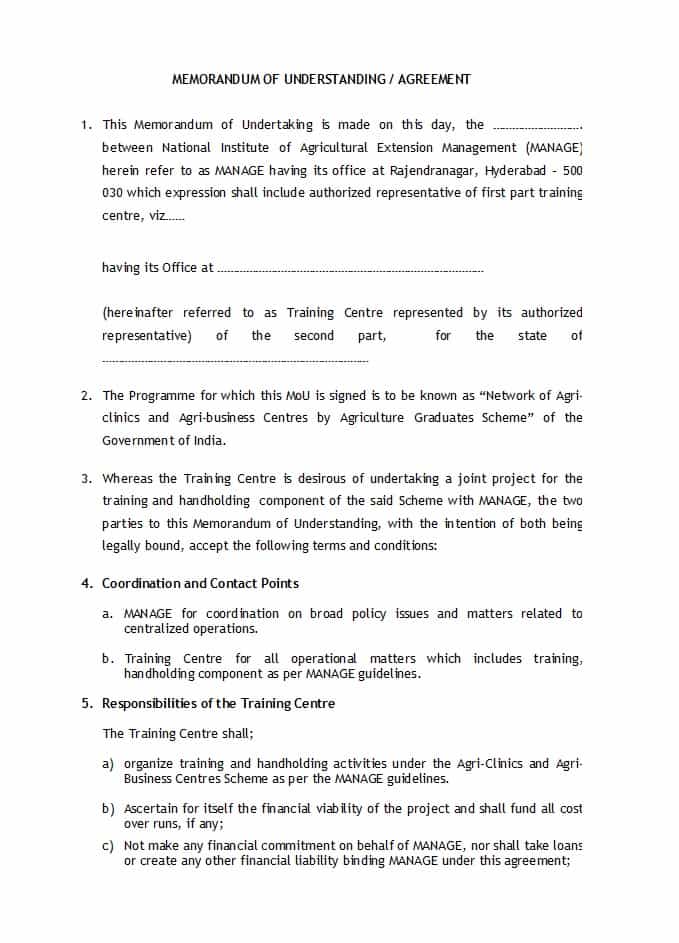Memorandum of understanding: Meaning, format and template
What is a memorandum of understanding? Is any agreement a memorandum of understanding? If not, what makes a memorandum of understanding an agreement? These are some of the questions that pop in your mind when you hear about a memorandum of understanding (MOU). This post has comprehensively explained the meaning of MOU as well as the format of writing it. Read on to know more.

Source: Getty Images
A memorandum of understanding is an agreement between two or more people, right? Wrong! An agreement is not a memorandum of understanding if it is not formalized. Such agreements are usually entered by companies or organizations that intend to establish official partnerships. This is because those companies are usually introducing new risks including the possibility of the other party not honoring the agreement. In the event that such a scenario arises, the memorandum of understanding is used to remind and even force the other party to honor the obligation.
Here is a comprehensive guide on all you need to know about a memorandum of understanding:
Meaning of memorandum of understanding
A memorandum of understanding, commonly referred to as MoU or MOU, is a formalized agreement involving two or more parties, be it individuals or entities. A memorandum of understanding can be categorized as either bilateral or multilateral. A bilateral agreement is that which involves only two people or parties. A multilateral agreement, on the other hand, is an agreement involving more than two parties and indicating a common or agreed upon line of action.
It is important to note that in law, a memorandum of understanding is relied on as a confirmation of the agreed terms when an oral agreement has not been reduced to a formal contract. In other situations, it can be a contract that is used in providing guidelines and principles to be followed by parties in accomplishing their goals.
The format of a memorandum of understanding
A memorandum of understanding ought to possess the following features:
- The identity of the parties: The agreement should specify the names of all parties entering the agreement.
- Purpose: This is what is to be achieved from the agreement. The document ought to outline purpose and goals to be achieved with the input of all parties.
- Duration: The agreement document should also give a duration for which the agreement would be in effect. It should have both the beginning and end dates of the agreement. The document should also envision circumstances that could lead to the termination of the agreement.
- Management: A well-structured memorandum of understanding should contain provisions for how the daily operations and activities of the program would be run. This should include the people to be responsible for all activities clearly stating their roles, obligations, and remuneration.
- Signature and date: Documents only become formal after they have been signed by the required authorities. After being satisfied with the terms in the agreement, all parties must sign it and ensure that all the relevant dates have been recorded appropriately.
READ ALSO: How to write a letter of permission to be absent from work
Memorandum of understanding template
Check out the memorandum of understanding below:

Source: Depositphotos
READ ALSO: How to write an application letter for employment
Memorandum of understanding sample
This document represents an agreement between [Partner X ] and [Partner Y]
A brief description of each organization
[Description of the organisations subject to the MOU]
Objectives and scope
[Here, include a statement of purpose. Other things that can also be covered in this section are a brief description of goals and expectations, and a justification for the arrangement.]
The nature of the collaboration
[Here, you need to describe the ways in which the partners will collaborate. Outline the services which are to be provided by the partners, including such things as advice on quality assurance processes, moderation and evaluation, record keeping, records maintenance and the issuance of credentials.]
Partner X will:
[Outline the services that are to be provided by the partner organisation(s).]
Partner Y will:
Definitions and interpretations
[If there are specific terms that need to be made clear, they should be included here. For example, you might want to make it very clear what you mean when you talk about the ‘materials’ that are used in the partnership. Therefore, you would provide a definition of ‘materials’ (documents, equipment, stored data).]
The terms of the agreement
[Here, you need to include the duration or proposed life of the agreement, how amendments are to be negotiated and agreed in consultation with collaborating partners, and processes for renewal or extension of the formal arrangement.]
Organisation and management of the agreement
[Under this heading, it is wise to allocate the various activities to each organisation in the partnership arrangement, e.g. under subheadings for each of the partner organisations.]
Principal contact details
[This includes quite specific information on the roles and responsibilities of the personnel involved in the various components of the partnership. For example, the document should include:
- The name and contact details of the principal contact person for this particular agreement.
- Clear guidelines on lines of communication and agreed processes for communicating within and across the collaborating organisations, e.g. team meetings, assessor meetings.
- Details of record keeping associated with delivery and assessment including what, when, how and by whom this will be managed
- An outline of the advice that can be provided on quality assurance of assessment and also how each partner will be involved
- A framework for monitoring and evaluating the achievement of the objectives set by the agreement
Resources and facilities
[Under this heading, you need to identify the equipment, materials, and facilities that will be contributed by each of the partners.]
Financial arrangements
[Here, include details of the fees, charges, and disbursements associated with the arrangement.]
Quality assurance
[Here, clearly spell out the obligations of the parties in relation to assuring the quality of all aspects of the partnership
Communication and exchange of information
[Under here, include an outline of how information and data that is generated by the collaboration is to be handled by all parties to the agreement. Include issues of confidentiality.]
Intellectual property
[Here, you will need to include details of who retains the rights to the intellectual property if produced.]
Marketing and publicity
[Include a simple outline of how and what activities will be promoted here.]
Settlement of disputes
[In this important section, describe the process for resolving disputes that may arise among the partners to the agreement.]
Review and evaluation
[Here, set out your plan and methods of determining whether you have met your objectives. Include how you will get feedback, your partners and any other key players that you think will provide information on the effectiveness of your partnership arrangement.]
[You should also set out your strategy for regularly reviewing your operational processes and identifying issues of concern. Success rates and reassessments are data that is worth collecting.]
Further headings
[There may be other items such as disclaimers, transfer and assignment, warranty and indemnity that you may want to include here.]
Disclaimer:
[Include the statement: This document is a Memorandum of Understanding and is not intended to create binding or legal obligations on either party.]
Effective dates and signatures
[Do not forget that for a written agreement to have the impact you need, appropriate authorities from each partner involved in the partnership, and all partners, should sign the document.]
I,[Principal Contact], [Position], [Partner X], as representative of [Partner X] agree to the above MOU conditions and partnership with [Partner Y].
Signed:
Date:
I, [Principal Contact], [Position], [Partner Y], as representative of [Partner Y] agree to the above MOU conditions and partnership with [Partner X].
Signed:
Date:
Schedules or appendices
[Schedules or appendices may include details of what will be assessed under the agreement]
READ ALSO: How to write an application letter for employment in Ghana
The next time you enter into an agreement in the form of a memorandum of understanding, you should be empowered to enter an agreement in which you are not taken advantage of. Ensure that you have identified all the features including the names of the parties, terms of the agreement, dates, and signatures of all the parties or their representatives. If you are tasked with preparing the MoU document, you can easily use the template provided to make your work easier.
READ ALSO: How to Write an Application Letter for Any Position Without Experience
Source: YEN.com.gh








